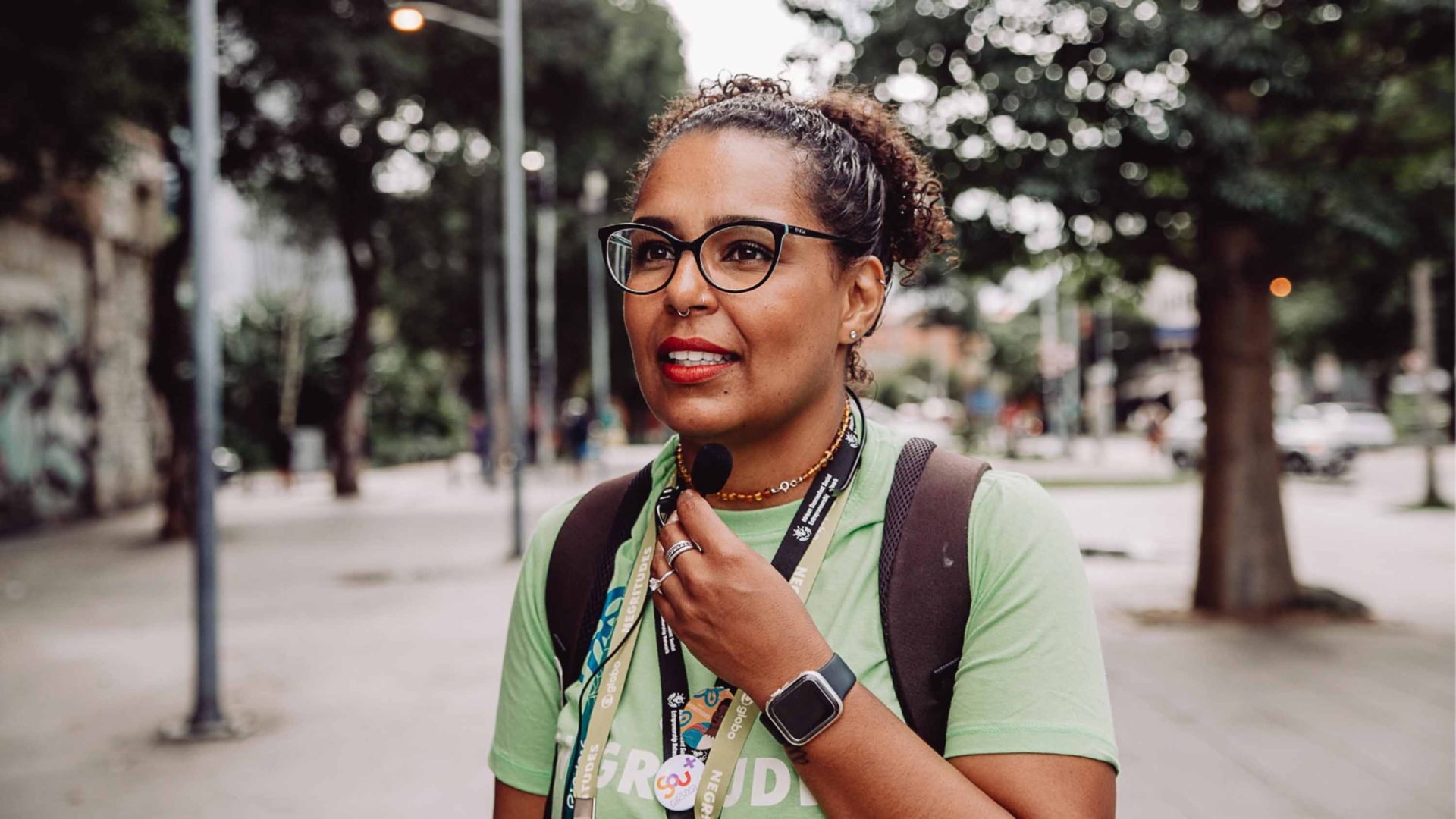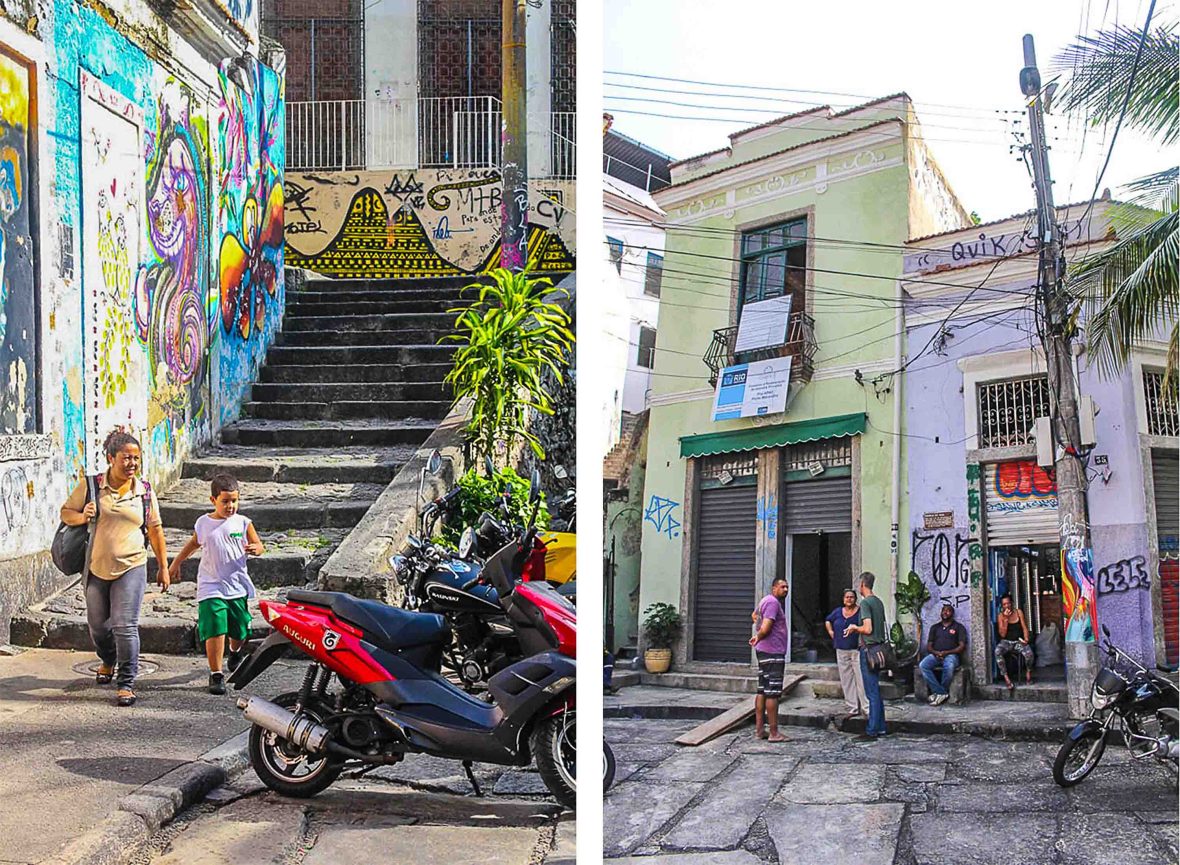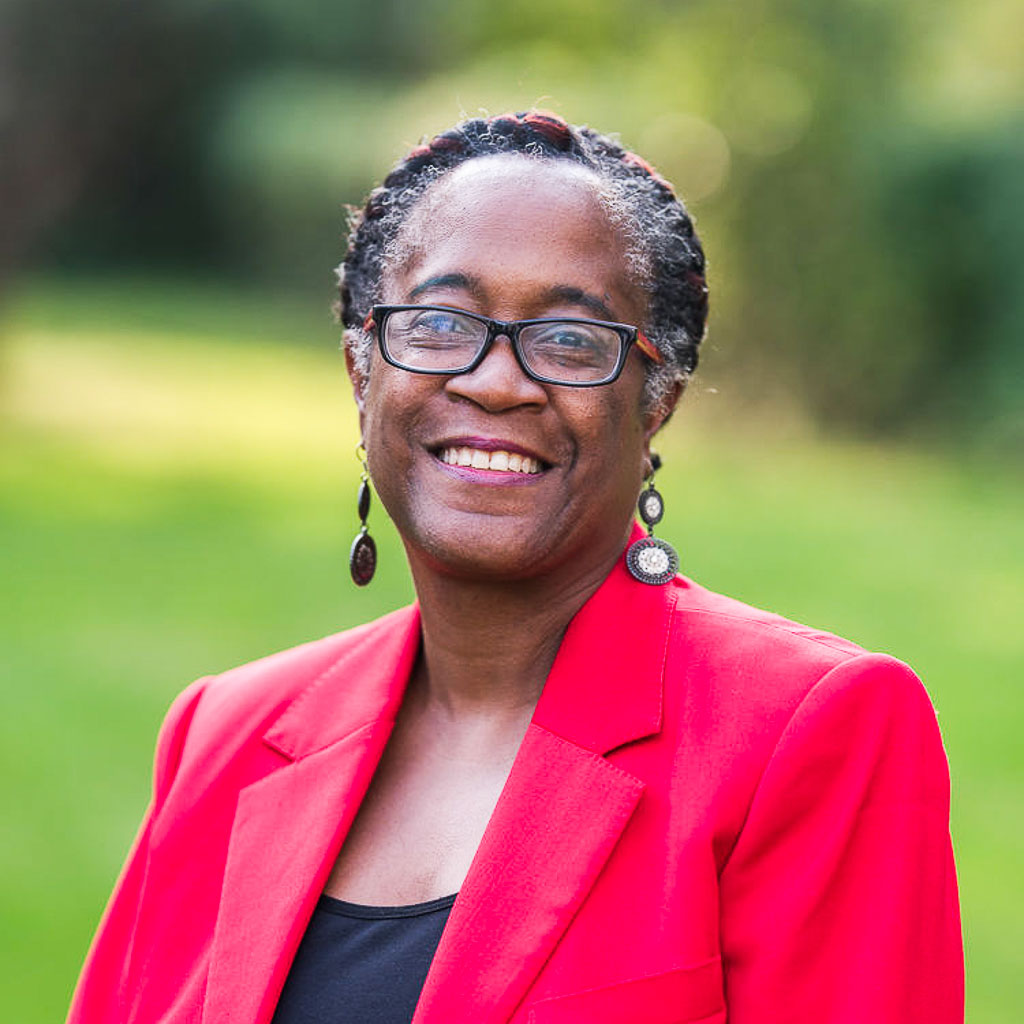
If you step out from under the shadow of Christ the Redeemer and take a break from Copacabana Beach, you’ll find a thriving and historic Afro-Brazilian culture in Rio’s Little Africa district.


If you step out from under the shadow of Christ the Redeemer and take a break from Copacabana Beach, you’ll find a thriving and historic Afro-Brazilian culture in Rio’s Little Africa district.
I’m back in Rio de Janeiro, back in Little Africa’s Gamboa neighborhood, and back with two people I’m very happy to see again—famed Black history tour guides, Lua Ferreira and Eddie Vander.
“Sister!” Lua says, embracing me. Beside her, Eddie’s face lights up. We last met in 2022 and these two Rio locals look exactly the same. Lua’s nut-brown skin and curly hair is still much like my own; Eddie, a broad-shouldered man who blinks enthusiastically when he speaks, is now sporting his natural curls—last I saw him, he had cornrows.
I’m immediately reminded of their warmth and shared passion for the city. Lua and Eddie’s Black history tours are renowned for stretching on for hours, and a day with them feels like taking a history lesson with a friend. A friend you also want to go for dinner and drinks with. It’s no surprise their tours sell out months in advance.
The work they’re doing is also boosting Rio’s Little Africa district onto the world’s tourism stage. This Black historical area is made up of the Saudade, Gamboa and Santo Cristo neighborhoods in the city’s north zone. For context, that’s about 15 minutes from Copacabana Beach.
“The historical and archaeological circuit celebrating Afro-heritage in Brazil is getting more famous,” Lua says. She has given tours to Brazilian celebrities and her tours in particular are a “tool to discuss colonial history, but to also show how empowered and resilient we are as people”.
And the interest is growing at such a rate that Lua’s even seeing the more traditional guides in Rio switch to leading Black history tours, even when they don’t have the community knowledge. “Companies realize they can make money off Black stories now,” she says. “After George Floyd, people want to connect and do more racial literacy.”
“I don’t like traditional tourism because nothing changes. You can go to Sugarloaf mountain, come back and it’s the same. But go to a favela or Black neighborhood, come back a few years later and you’ll see that everything’s changed.”
- Eddie Vander, guide
Brazil is home to the second-largest African population outside of Africa, and many of the country’s most famous cultural exports—like Carnival, feijoada (a black bean stew) and Capoeira (martial art style)—are anchored in Afro-Brazilian culture.
And yet research from 2022 shows that the poverty rates of Black and brown persons in Brazil are nearly twice that of the white community. Many of these lower socioeconomic groups live in Rio’s hillside favelas and quilombos—areas that were created by escaped African slaves during the 17th and 18th centuries.
Eddie grew up in a Rio favela, and still lives in a favela—albeit a “safe” one, he tells me. Eddie began working as a tour guide 25 years ago after learning English in a favela social program. His tours originally involved ferrying tourists to see the Christ the Redeemer statue, but in 2016, he took a special interest in the social fabric of his city.
“I don’t like traditional tourism because nothing changes. You can go to Sugarloaf mountain, come back and it’s the same,” he explains. “But go to a favela or Black neighborhood, come back a few years later and you’ll see that everything’s changed. People are discovering more archaeological sites and new elements every day.”
Change is definitely in the air as we approach Valongo Wharf, a UNESCO-listed site and port of stony ruins where over a million slaves were once brought into Brazil. Last time I was here, I was shocked at the blink-and-you’ll-miss-it plaque commemorating the tragic history, at how barren and forgotten the site felt.
But today is different. Although it’s far from museum-standard, there are more signposts and information about Brazil’s role in the slave trade. According to Lua, the current government under President Lula has reinvested in the area. “The politicians are more progressive and discuss Little Africa and public policy around the area,” she says.
Everyone, and I mean everyone, knows Lua. “I consider myself a connection between big institutions and the people” she says, waving at someone we pass. “I want to help build a new perspective around Brazilian international identity.”
We walk next to Pedra do Sal, at Conceição hill, one of the most well-known parts of Little Africa. Pedra do Sal is basically a huge rock surrounded by apartment blocks, where open-air parties take place. The name translates to ‘rock of salt’, named as such due to the enslaved Africans who were forced to work here, breaking huge chunks of salt on the giant rock during their bondage.
Pedra do Sal was Rio’s first community of free and escaped slaves (known as a Quilombo) and today it’s a cornerstone of Eddie and Lua’s tours. Last time I was here, Lua almost fought me when I told her I’d heard the birthplace of samba was Salvador, a city in the north. “Samba started here, in Pedra do Sal” she said gravely. Lesson learned.
Nestled among a painful history and divided reality, there is an exuberance for life at the core of Brazilian culture.
Flanked by a staircase edged by a high colorful wall on which icons of Black Brazilian resistance are painted, today the legendary samba parties still take place. The area is just as vibrant as I remember, but Eddie is concerned.
“Little Africa has become popular in the last couple of years and it’s getting more exclusive, with less Black people living here,” says Eddie. “Today, to keep the public entertained, the DJ now plays Taylor Swift and the Backstreet Boys between the samba,” he says, exasperated. “I know the history of this place, so I find it offensive. The way things are going, Pedra Do Sal won’t exist in a few years.”
So is the answer less tourism, to preserve the fabric of the place? Eddie doesn’t think so. “The more people know our history, the more they can fight gentrification,” he explains. I hope he’s right.

Last year, I stayed on partying until the early hours at Pedra do Sal with Eddie and his friends. His tours offer a holistic view of Rio, and Black history and reality, and he’s more than happy to accompany people to local bars. Last time, he only asked for a drink as payment and made sure I was safe.
After our catch-up with Lua, I meet Eddie at Pedra do Sal again. It’s rammed with locals and tourists, with queues in front of the many stalls selling Caipirinha de Maracuja’s, a three-ingredient drink—cachaça, passion fruit and sugar.
Eddie is working overtime, looking after a group of three—an American influencer from Brooklyn and two guys who, like me, are from London. We all hit it off. Stuck between bodies slick with sweat in the humid night air and sipping caipirinha from plastic cups, we sway to samba until Eddie bows out. I’m grateful for the introductions, and we continue the party back at someone’s hotel until the early hours.
This is why I return to Rio, and to Brazil, I think to myself as the sun comes up. Yes, the weather is gorgeous year-round with mandarin sunsets that cast everyone in a deep golden glow. Yes, the beaches are seemingly designed for people-watching, framed by lush forested hills and world-famous landmarks, making it hard to peel yourself off them. But besides these things, it’s the incomparable passion for living which brings me back.

Nestled among a painful history and divided reality, there is an exuberance for life at the core of Brazil. I encountered it in the Rio women who adopted me when I was dancing alone at Carnival. I witnessed it in an emotional and animated Capoeira performance in Bahia. And I see it in Lua and Eddie, too. In the Black stories and histories that they’re sharing with the world. Afro-Brazilian culture is Brazilian culture, you cannot distill one from the other.
There’s nowhere on earth that makes me feel more alive than Rio de Janeiro. And as a travel writer with Nigerian ancestry (a story I know little about), I find that Little Africa makes me feel more like myself each time I return.
The writer was supported by Visit Brasil during their stay.
***
Adventure.com strives to be a low-emissions travel publication. We are powered by, but editorially independent of, Intrepid Travel, the world’s largest travel B Corp, who help ensure Adventure.com maintains high standards of sustainability in our work and activities. You can visit our sustainability page or read our Contributor Impact Guidelines for more information.

Georgina Lawton is a fan of solo exploring, adventure travel and is the author of the travel book, 'Black Girls Take World' and memoir 'Raceless', both released in 2021. She's traveled the world alone for more than a year; some of her favorite countries include Nicaragua for unspoilt hikes and beaches, Indonesia for the food, and Brazil for just about everything. Originally from London, she now lives in Lisbon, where she is working on her first novel and learning Portuguese in between writing and making travel content on TikTok.






Can't find what you're looking for? Try using these tags: